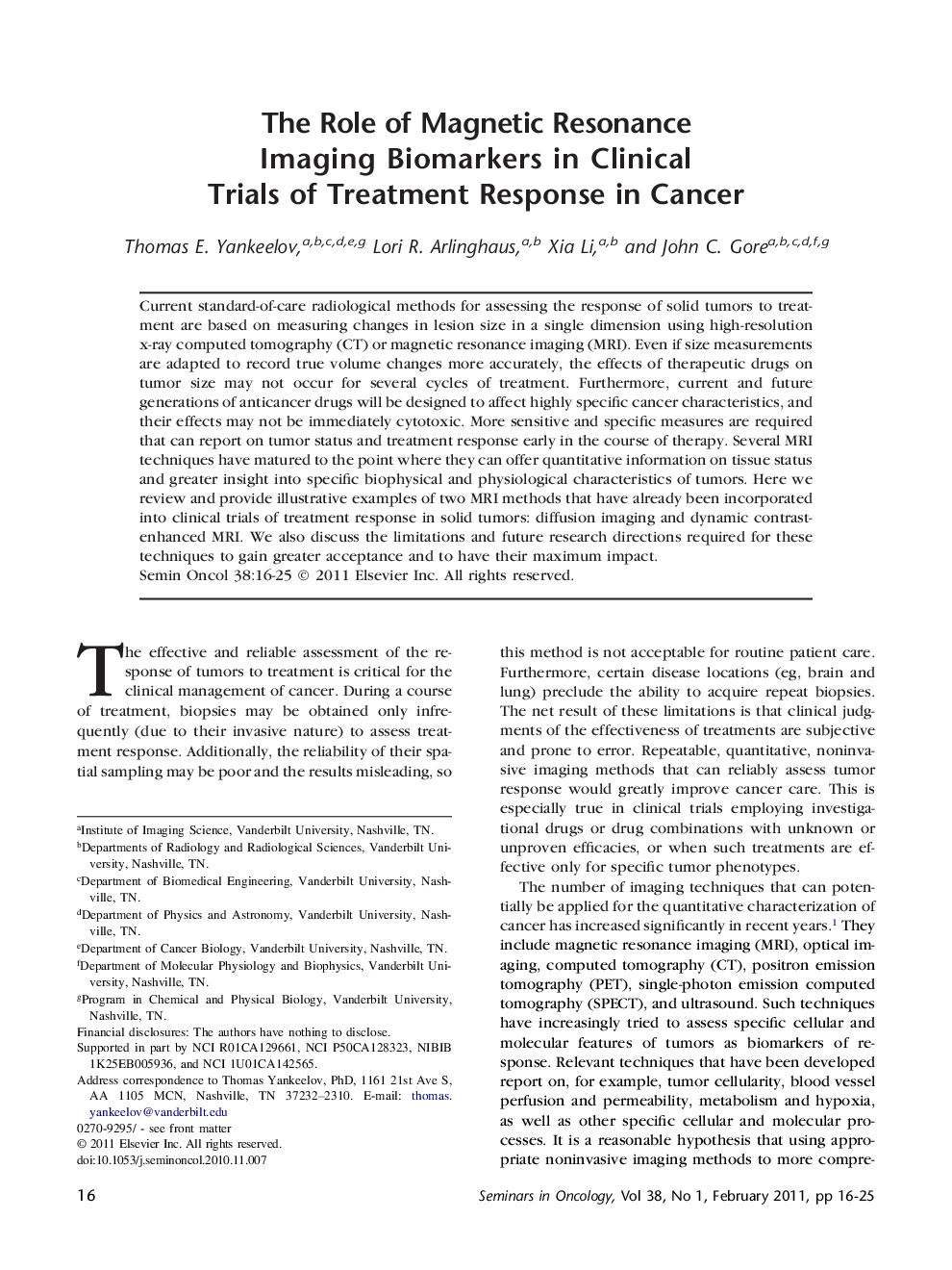| کد مقاله | کد نشریه | سال انتشار | مقاله انگلیسی | نسخه تمام متن |
|---|---|---|---|---|
| 2162442 | 1091251 | 2011 | 10 صفحه PDF | دانلود رایگان |
عنوان انگلیسی مقاله ISI
The Role of Magnetic Resonance Imaging Biomarkers in Clinical Trials of Treatment Response in Cancer
دانلود مقاله + سفارش ترجمه
دانلود مقاله ISI انگلیسی
رایگان برای ایرانیان
موضوعات مرتبط
علوم زیستی و بیوفناوری
بیوشیمی، ژنتیک و زیست شناسی مولکولی
تحقیقات سرطان
پیش نمایش صفحه اول مقاله

چکیده انگلیسی
Current standard-of-care radiological methods for assessing the response of solid tumors to treatment are based on measuring changes in lesion size in a single dimension using high-resolution x-ray computed tomography (CT) or magnetic resonance imaging (MRI). Even if size measurements are adapted to record true volume changes more accurately, the effects of therapeutic drugs on tumor size may not occur for several cycles of treatment. Furthermore, current and future generations of anticancer drugs will be designed to affect highly specific cancer characteristics, and their effects may not be immediately cytotoxic. More sensitive and specific measures are required that can report on tumor status and treatment response early in the course of therapy. Several MRI techniques have matured to the point where they can offer quantitative information on tissue status and greater insight into specific biophysical and physiological characteristics of tumors. Here we review and provide illustrative examples of two MRI methods that have already been incorporated into clinical trials of treatment response in solid tumors: diffusion imaging and dynamic contrast-enhanced MRI. We also discuss the limitations and future research directions required for these techniques to gain greater acceptance and to have their maximum impact.
ناشر
Database: Elsevier - ScienceDirect (ساینس دایرکت)
Journal: Seminars in Oncology - Volume 38, Issue 1, February 2011, Pages 16-25
Journal: Seminars in Oncology - Volume 38, Issue 1, February 2011, Pages 16-25
نویسندگان
Thomas E. Yankeelov, Lori R. Arlinghaus, Xia Li, John C. Gore,